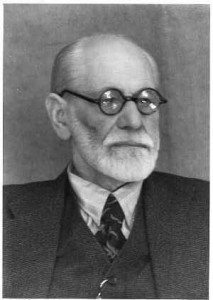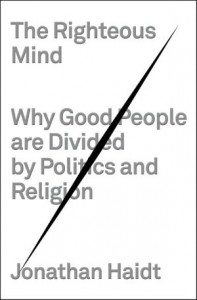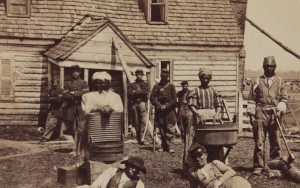This is mark Joseph “young” blog entry #49, on the subject of Duchovny, Anderson, Sexism, and the Free Market.
The scuttlebutt in the entertainment industry at the moment is that for the new X-Files revival, actress Gillian Anderson, who plays scientist/agent Dana Scully, was offered half the pay that was offered to actor David Duchovny, who plays agent Fox Mulder. The outrage arises, that an actress (I’m sorry–“female actor”) would be paid only half as much as an actor (that is, a male actor) for the same work. It screams that the wage gap is still a real issue, even in mostly liberal Hollywood.
No one can argue that Anderson isn’t every bit as good an actor as Duchovny. She has more awards and more nominations, even in the “big” ones–Duchovny has two Golden Globes (the second in 2008 for Californication) to Anderson’s one, but she also has a Prime Time Emmy and a Screen Actors Guild (SAG) award. Even supposing that the competition is stiffer for the male awards than the female ones, her credentials are impressive.
Yet in all the hullaballoo a few points are being overlooked. So, what’s the real issue?
First, let’s be clear: In the new revival X-Files miniseries Gillian Anderson is being paid the same amount as David Duchovny. The complaint is that when they contacted her initially they offered her considerably less than they had agreed to pay him. Of course, they did not contact her, and they did not contact him–they contacted her agent and his agent, and made offers, which the agents then negotiated to an agreed salary. Further, we are not privy to any of this negotiation. We do not know any of the numbers. It might be that they offered Duchovny a half a million per episode and then settled for a million per episode, and then made the same half million per episode offer to Anderson and negotiated to the same million dollar mark. The numbers might be much smaller than that; they might be larger. No one is talking numbers, and no one is talking about the negotiation process. However, clearly there was a negotiation process, because Anderson’s complaint was that they offered her half of what they were paying Duchovny, but she does not know what they initially offered Duchovny and she does know that her agent negotiated her the same pay before any filming was done. Maybe that’s not the case; maybe they really did offer Duchovny twice what they offered Anderson. Neither we nor she know that.
There is, though, a more fundamental issue here.
Star Trek: The Next Generation was one of the great “ensemble dramas” of the eighties. Hill Street Blues, L. A. Law, Dallas, and a number of others dotted primetime. One of the things that distinguished this type of show from those of the sixties was that there was not really a “star”–that is, the original Star Trek was a vehicle starring William Shatner as Captain Jim Kirk, with Leonard Nimoy’s Spock and the other characters all in supporting roles. Even when a particular episode was primarily about Spock, such as Amok Time, Kirk was the hero. By contrast, in Next Generation there were entire episodes in which Patrick Stewart’s Captain Jean-Luc Picard was not on screen at all. Yet when the first film was made, it was reported that Patrick Stewart was paid twelve million dollars to appear, and Brent Spiner (Commander Data) eight million, the two together making near as much as the other major members of the cast combined. Sure, they had big roles in that film–but we don’t know to what degree they got paid more for the bigger roles versus were given the bigger roles because they were costing the studio more. The latter is the more likely. Studios negotiate with actors (through their agents) individually, and from the studio’s side the question is whether having this actor is worth the money in the sense that more people are likely to buy tickets if he is in the show than if he is not. Presumably Paramount concluded that Michael Dorn (Lieutenant Worf) could be written out of the script if he wanted more than whatever they paid him, and Dorn agreed that he would rather work for that lesser amount than be dropped from the movie. Picard and Data were vital characters; Riker, Crusher, Troi, La Forge, and others not so much.
So if we assume that 20th Century Fox actually did initially offer Duchovny more than they offered Anderson, the obvious conclusion is that they thought Duchovny was worth more to the show, or would demand more to be on it. Further, there is evidence to support such a conclusion. Duchovny had a starring role in the popular pay-cable series Californication for seven years, and since then has the lead in the police drama Aquarius. Anderson has had a number of critically acclaimed roles–the National Theatre’s A Streetcar Named Desire, Great Expectations, Bleak House–but no leading roles in something primarily popular. As important as she is to the X-Files franchise and as highly praised for her other work, her name does not sell as many tickets as his does. The producers do not have the financial incentive to pay her as much, because they would not necessarily expect–or get–the same return on their investment.
Arguably, Duchovny has gotten popular leading roles and Anderson has been working in less prominent jobs because Hollywood favors leading roles for men. Yes, it does–but not because Hollywood producers prefer men in leading roles. It’s because of audience preferences.
Geena Davis played a powerfully compelling action hero in The Long Kiss Goodnight, and Samuel Jackson as the sidekick was every bit as entertaining in it as he was in Die Hard 3 alongside Bruce Willis. Willis was the actor who made yet another sequel, because men prefer to see men in the action hero roles. Meanwhile, women prefer hearthrob men in their romantic leads, from Rudolph Valentino to Matthew McConaughey. The prejudices are not with the producers–they will attempt anything they believe will make money, without regard for names or quality or race or gender. The track record, though, says that male leads draw bigger audiences, and so make more money, than female leads. There are some women who buck the trend, get good roles and make them work, but most big roles go to men because that’s what audiences pay to see.
So there is indeed sexism in the video entertainment industry, but it’s not in the producers, not in the people who make the movies and television shows. They pay for what they perceive themselves to be getting. What they are getting is viewers, ticket purchasers, and what they are selling is what those viewers want to see. If most of the world wants V-Neck sweaters, most clothing manufacturers are going to invest in V-Necks and avoid Turtlenecks. When fast food purchasers move more toward healthy food, McDonalds shifts its emphasis away from burgers into chicken, salads, wraps, and yogurt. Male actors get more money, in the main, because more viewers are more willing to spend more money to see them. The sexism Gillian Anderson faces is not that of the people making The X-Files. It’s the sexism of the people watching, who would pay more money to see David Duchovny than to see her.
Sure, there are people who will scream to high heaven that Gillian Anderson is the important person in the show. Never mind that she was originally hired to be the sidekick to Duchovny’s starring role, instructed to stand slightly behind him so he would be prominent in most shots in the first season, she became the indispensible equal, for some even superior, partner. Yet the numbers say that you, the viewers aggregately, pay more to see Duchovny than to see Anderson, even if some of you consider her the real star. The producers are only trying to provide the product that will draw the most customers, the biggest audience, at the lowest total outlay. As far as they are concerned, the fact that they might be paying a man more than a woman has nothing to do with gender and everything to do with spreadsheets. It is, ultimately, what viewers are willing to buy that pays those salaries. That’s where the prejudice is found.
[contact-form subject='[mark Joseph %26quot;young%26quot;’][contact-field label=’Name’ type=’name’ required=’1’/][contact-field label=’Email’ type=’email’ required=’1’/][contact-field label=’Website’ type=’url’/][contact-field label=’Comment: Note that this form will contact the author by e-mail; to post comments to the article, see below.’ type=’textarea’ required=’1’/][/contact-form]











